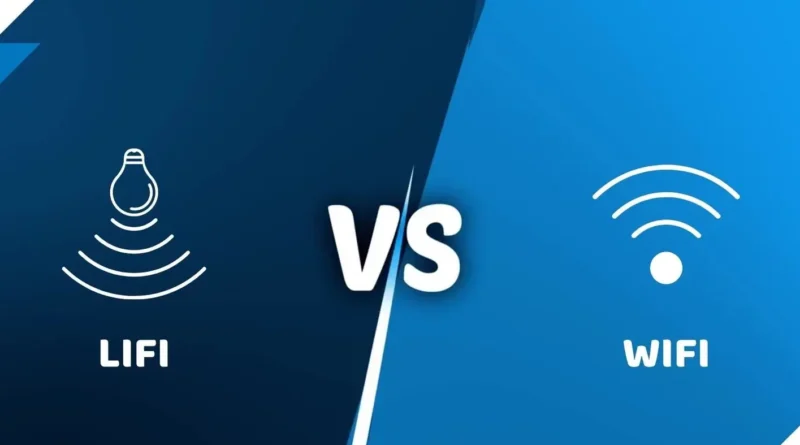Li-Fi vs. Wi-Fi: The Future of Wireless Internet Explained
|
Getting your Trinity Audio player ready...
|
In today’s hyper-connected world, Wi-Fi has become a cornerstone of internet access, powering everything from smartphones to smart homes. However, a groundbreaking technology called Li-Fi (Light Fidelity) is emerging as a potential game-changer. Promising blazing-fast speeds and enhanced security, Li-Fi is generating buzz as a possible Wi-Fi alternative. But what exactly is Li-Fi, how does it work, and can it truly replace Wi-Fi? Let’s dive into this exciting innovation with a clear, SEO-optimized, and easy-to-read guide.
What is Li-Fi?
Unlike Wi-Fi, which relies on radio signals to transmit data, Li-Fi uses visible light from LED bulbs to deliver internet connectivity. Yes, you read that right—Li-Fi harnesses the power of light to connect you to the internet! This cutting-edge technology, pioneered by German scientist Harald Haas in the early 2000s, leverages Visible Light Communication (VLC) to transmit data at unprecedented speeds.
Li-Fi is still in its experimental phase, with companies like France-based Oledcomm conducting trials since 2008. While it’s too early to declare it a Wi-Fi killer, Li-Fi’s potential is undeniable. Let’s explore how it works and what sets it apart.
How Does Li-Fi Work?
Li-Fi operates by modulating the light emitted from LED bulbs to transmit data. These modulations happen so quickly that they’re invisible to the human eye, ensuring no disruption to your lighting. Here’s a simplified breakdown:
- Data Encoding: Information is encoded into the light emitted by an LED bulb.
- Transmission: The modulated light travels to a receiver, such as a smartphone or laptop equipped with a Li-Fi dongle or sensor.
- Decoding: The receiver decodes the light signals back into usable data, providing internet access.
This process allows Li-Fi to achieve speeds up to 100 times faster than traditional Wi-Fi, with theoretical peaks reaching 224 Gbps (gigabits per second). For comparison, even the latest Wi-Fi 7 standard struggles to match such velocity.
Li-Fi vs. Wi-Fi: Key Differences
Wi-Fi has evolved significantly since its debut in 1996, with advancements like Wi-Fi 6, 6E, and 7 delivering faster speeds and better performance. However, Li-Fi brings unique advantages—and some limitations—that set it apart. Here’s a closer look:
Advantages of Li-Fi
- Lightning-Fast Speeds
Li-Fi’s use of light enables data transfer at unparalleled rates, making it ideal for bandwidth-heavy applications like 4K streaming, virtual reality (VR), and online gaming. Its low latency also ensures smoother performance. - Enhanced Security
Since light cannot penetrate walls, Li-Fi signals are confined to the area where the bulb is shining. This makes unauthorized access nearly impossible, offering a significant security boost over Wi-Fi’s radio signals, which can be intercepted. - Energy Efficiency
Li-Fi operates using LED bulbs, which are already energy-efficient. By combining lighting and internet delivery, it reduces the need for separate infrastructure, saving power. - Interference-Free
Unlike Wi-Fi, which relies on crowded radio frequencies, Li-Fi is immune to electromagnetic interference. This makes it reliable in environments like hospitals or airplanes, where radio signals can cause issues. - Ubiquitous Availability
Wherever there’s light, Li-Fi can potentially provide internet access, opening up new possibilities in homes, offices, and public spaces.
Disadvantages of Li-Fi
- Limited Range
Li-Fi’s reliance on light means it’s restricted to enclosed spaces. Signals can’t pass through walls, so large areas or multi-room setups may require multiple Li-Fi bulbs, increasing complexity. - Dependency on Light
No light, no internet. If the power goes out or a bulb fails, Li-Fi stops working. This makes it less reliable in certain scenarios compared to Wi-Fi, which can operate independently of lighting. - Device Compatibility
As a new technology, Li-Fi requires specialized receivers, which aren’t yet standard in most devices. This could slow its adoption until compatible hardware becomes widespread. - Immature Technology
Li-Fi is still in the research and development phase, meaning it’s not ready for mainstream use. Scaling it for commercial deployment will take time and investment.
Why Does Li-Fi Matter?
Li-Fi’s potential goes beyond just speed. Its unique characteristics make it suitable for specific use cases where Wi-Fi struggles:
- High-Security Environments: Banks, military facilities, and hospitals can benefit from Li-Fi’s secure, confined signals.
- Dense Urban Areas: Li-Fi’s interference-free nature makes it ideal for crowded cities where Wi-Fi networks often overlap.
- Smart Homes and Offices: Integrating internet with lighting systems could streamline infrastructure and reduce energy costs.
- Niche Applications: Li-Fi could power underwater communication or provide connectivity in areas where radio signals are restricted.
However, speed alone isn’t enough to dethrone Wi-Fi. Factors like range, reliability, and device compatibility will determine whether Li-Fi becomes a true competitor or remains a complementary technology.
When Will Li-Fi Be Available?
Li-Fi is still navigating its experimental phase, but progress is steady. According to Oledcomm, commercial Li-Fi solutions could hit the market between 2024 and 2029. Early adopters may see it in niche applications, such as secure corporate networks or smart lighting systems, before it reaches homes.
The timeline depends on overcoming challenges like device compatibility, infrastructure costs, and consumer awareness. For now, Li-Fi remains a fascinating glimpse into the future of wireless connectivity.
Li-Fi vs. Wi-Fi: Which is Better?
It’s too soon to crown a winner. Wi-Fi is a mature, widely adopted technology with a robust ecosystem, while Li-Fi is an innovative newcomer with immense potential but significant hurdles. The two may ultimately coexist, with Li-Fi powering high-speed, secure environments and Wi-Fi serving as the go-to for general use.
Here’s a quick comparison:
| Feature | Li-Fi | Wi-Fi |
|---|---|---|
| Medium | Visible Light | Radio Waves |
| Speed | Up to 224 Gbps (theoretical) | Up to 9.6 Gbps (Wi-Fi 7) |
| Range | Limited to light’s reach | 50-100 meters |
| Security | High (light doesn’t pass walls) | Moderate (encryption needed) |
| Interference | None | Susceptible to overlap |
| Availability | Experimental (2024-2029) | Widely available |
The Future of Li-Fi
Li-Fi is a bold step toward reimagining wireless internet. Its ability to deliver ultra-fast speeds, ironclad security, and energy efficiency makes it a contender worth watching. However, challenges like limited range and dependency on light mean it’s not a one-size-fits-all solution—yet.
As research continues and infrastructure evolves, Li-Fi could carve out a niche in our increasingly connected world. Whether it becomes the Wi-Fi of tomorrow or a specialized alternative, one thing is clear: the future of internet connectivity is brighter than ever.
FAQs About Li-Fi
1. Is Li-Fi faster than Wi-Fi?
Yes, Li-Fi can theoretically reach speeds up to 224 Gbps, far surpassing even the latest Wi-Fi standards.
2. Can Li-Fi work in the dark?
No, Li-Fi requires visible light to function. If the lights are off or a bulb fails, the connection stops.
3. Is Li-Fi secure?
Yes, Li-Fi is highly secure because its signals are confined to the area where light is present, preventing unauthorized access.
4. When will Li-Fi be available for home use?
Commercial Li-Fi solutions may arrive between 2024 and 2029, depending on technological advancements and adoption.
5. Will Li-Fi replace Wi-Fi?
It’s unlikely to replace Wi-Fi entirely but could complement it in specific scenarios, like high-security or high-speed environments.




